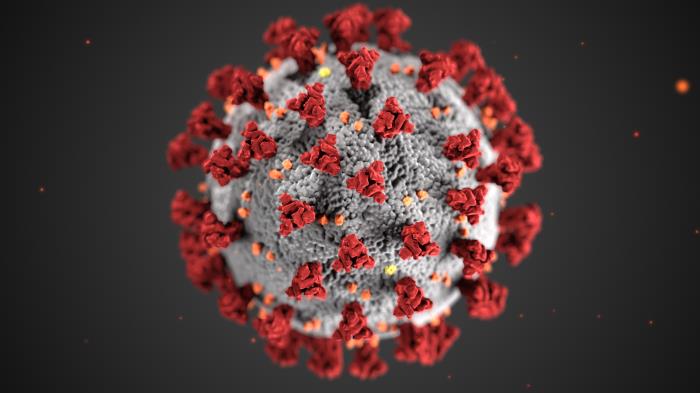Here is the text of some e-mails that I just sent.
To my college roommate who is an oncologist:
I hope you won't mind me asking you a question.This pandemic has gotten me interested in the mechanics of viral transmission. I've been reading with great interest about the research of Lydia Bourouiba at MIT. She has demonstrated with mathematical models, in peer reviewed research, that respiratory droplets travel much further than 6 feet, yet Anthony Fauci refuses to believe her -- when he's not a mechanical engineer.In looking at the papers on viral transmission, there seems to be an assumption that viruses are not transmissible by aerosol until proven to be transmissible. In the law, we would call this "innocent until proven guilty." That's what we would call an issue of "burden of proof." Who has the burden of proving someone or something guilty? In the law, the burden is on the plaintiff or the prosecutor to prove the defendant guilty.But why do we give the virus the benefit of the doubt? It seems to me, looking at news stories, that this assumption has gotten people in a lot of trouble both with Ebola and with this latest novel coronavirus. Medical personnel went in with inadequate PPE and got sick... until they were in hazmat suits.Why don't we assume that the virus is capable of aerosol transmission and even of penetrating the skin, until the virus is proven innocent? The virus is not a human being with constitutional rights. Why not guilty until proven innocent?
To the chair of the physics department of Dartmouth College
I got your name off the Dartmouth website as chair of the physics department.
I am an alum. I majored in physics. I was a TA in pre-med physics. I have a question about the mechanics curriculum.
When I was in freshman physics, I remember quite vividly using a little spring loaded device that shot a steel ball. We stopped the ball at several points and demonstrated that its arc of flight was a parabola.
I think we had the pre-med physics class doing that same experiment.
We didn't, as I recall, get into the mechanics of flight -- or aerodynamics. That was deemed too complex, I believe, for pre-meds, who would struggle with the idea of a parabola.
Now, I'm seeing what I think are bad consequences of this curriculum decision. Doctors assume that a round object, like a coronavirus, will fall like the steel ball within 6 feet. When Lydia Bourouiba of MIT does fluid mechanical modeling and demonstrates in a peer reviewed paper that respiratory droplets can travel up to 27 feet, due to turbulent flow, Anthony Fauci does not believe her.
To me, looking at the images of the coronavirus, given it's size and weight, it seems fairly clear that the little projections would make it capable of flight, like dandelion fluff -- at least for a while, until it dries up. It's small and light, so it would not require big wings like a helicopter or an airplane, and not even as big of tendrils as dandelion fluff.
Yet doctors don't think that way. They remember the steel ball falling along the parabola. They've made assumptions about the behavior of viruses in air that are unjustified, given fluid mechanics. They've repeatedly sent medical personnel into harm's way with inadequate PPE and those personnel have died as a result -- both in the Ebola situation and the COVID-19 situation.j
I am concluding that the pre-med physics curriculum needs to be drastically revised. It is unlikely that a doctor would need to calculate the trajectory of a cannon ball, unlike Isaac Newton. It is much more likely that they would need to calculate the trajectory of something that can be blown about in air currents.To my sister-in-law who has a Ph.D. in mechanical engineering from CalTech. This was a cover letter to forwarding the e-mail immediately above.
I am forwarding to you a copy of an e-mail that I just sent to the chair of the physics department at Dartmouth, where I went to college, about the curriculum of pre-med physics.
I'm remembering an interchange you and I had back when I was doing natural childbirth. At that time, obstetricians were still doing episiotomies. This was a procedure where they would cut the tissue around the vagina during childbirth, on the belief that this would reduce tearing, or make tears easier to repair.
It was your opinion, at the time, that this procedure was unjustified in view of mechanical engineering principles -- that the procedure would make tears worse, not better. I'm noticing that now, 30 years later, episiotomies have finally been discredited, though some doctors *still* do them.
I'm seeing something similar in the medical literature that I'm seeing about the transmission of coronavirus. They're making assumptions based on faulty understanding of fluid mechanics.
I'm wondering if you've been following the research of Lydia Bourouiba at MIT -- and her modelling of the mechanics of flight of respiratory droplets -- and the rejection by Anthony Fauci of her conclusions.
I'm proposing to the chair of the physics department at Dartmouth that the curriculum of pre-med physics needs to be drastically revised.
*****
Here's another example of the virus being presumed innocent until proven guilty. This is in the question of whether pets can transmit the virus to humans.
https://now.tufts.edu/articles/can-pets-get-or-spread-covid-19
Despite the fact that the virus is believed to have jumped from animals to humans in the first place, and the fact that infection in animals from humans has been documented, people don't believe the virus could still jump from animals to humans, because there is "no evidence."

No comments:
Post a Comment
Note: Only a member of this blog may post a comment.